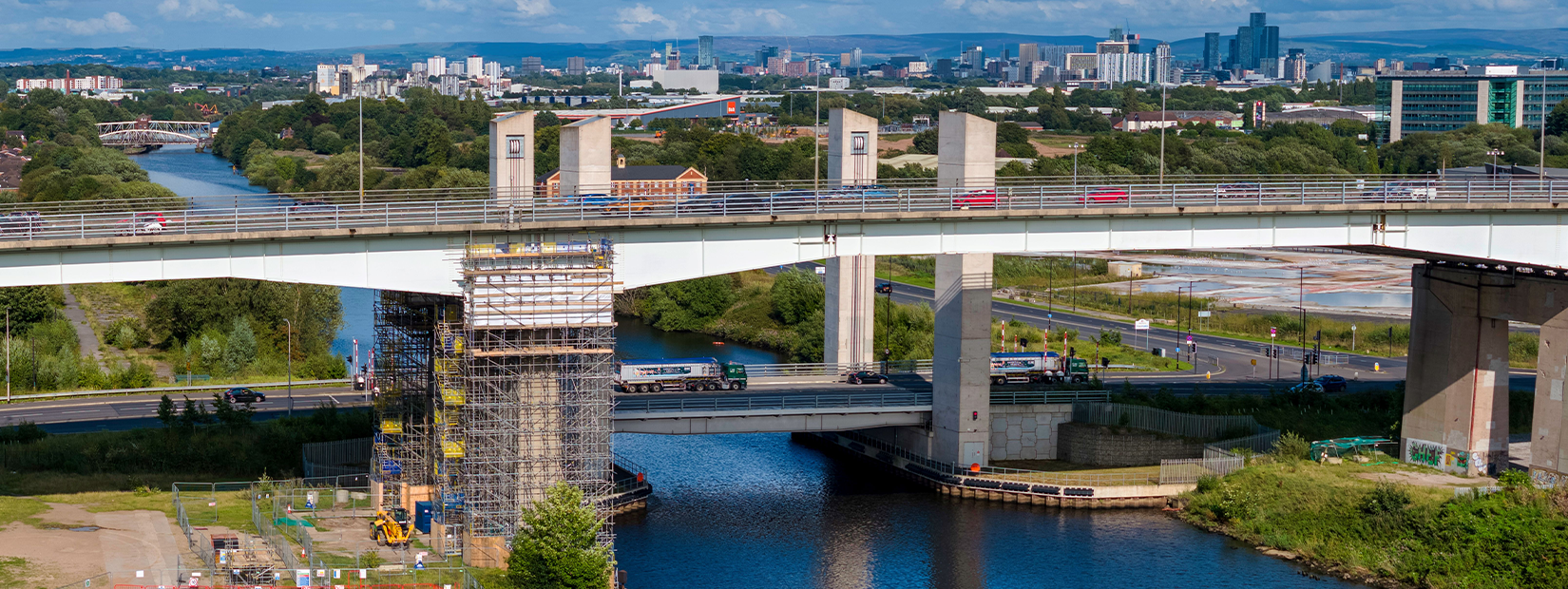As part of our city centre blog series, read on as Dave Bradshaw, our Monitoring Manager, explores how using intelligent monitoring solutions can help to keep the 72,000 bridges in our UK highways network safe and the country’s highways running smoothly.
With the increasing size and weight of vehicles, along with the ever-changing weather conditions in the UK, more and more bridges are falling into disrepair. In fact, there are over 3,000 substandard bridges across the UK today, with this number increasing year-on-year. Couple this with the decreasing number of Highways Bridge Inspectors and the fact that only a third of bridges are inspected annually on national networks, and there is a clear need for alternative methods for maintaining bridges.
As a vital part of the country’s urban infrastructure, carrying trains, cars and people, bridges need to be protected and maintained. This is perhaps even more important within our busy towns and cities, with any construction works or bridge closures likely to cause immense disruption to local people, traffic and businesses. With this in mind, any solutions that can ensure a bridge is safe to remain open whilst work is carried out or can help to better plan and schedule maintenance works, is invaluable.
Here, structural health monitoring (SHM) can have a big role to play, providing live, up-to-the minute data on how structures or infrastructure is behaving, including buildings, bridges and tunnels, either before, during or after work has been completed.
The use of permanent SHM on structures and other assets, such as bridges, can minimise the reliance on visual inspections and human access to detect deterioration or damage. As well as helping save on cost and resources, this can also reduce the number of road closures required in order to grant safe access, something can be costly as well as disruptive. The live data generated provides visible, instant and accurate information, including on any movement, vibrations or other changes to the structure of the bridge, determining whether maintenance or repairs need to be undertaken. In addition to this, by using remote monitoring solutions, you can incur the environmental benefits of not having to physically visit multiple structures on a regular basis.
Should a bridge be found in need of repairs, this same data can be used to inform the appropriate designing of a temporary propping and jacking scheme, as well as a risk mitigation management plan. Similarly, in an emergency, such as that caused by flooding or a bridge strike, applying SHM to the afflicted bridge is one of the most important initial steps to be undertaken. This will provide project teams with the necessary insight into the condition of the bridge and what the next steps are to make it safe for continued use.
One of the main challenges in designing a propping and jacking scheme for bridges, when compared to a building, is the changing load requirements, with the weight of vehicles and services using the bridge on any given day constantly changing. Through the use of structural monitoring technology, teams can be alerted instantly if there are any loads or forces which fall outside the set limits, enabling engineers to make the necessary alterations to the propping installed. Able to be used in conjunction with temporary propping and jacking, this can deliver a wealth of benefits and value for asset managers and contractors.
This can be taken one step further by integrating hydraulic props onsite, which can be automatically and intelligently linked on site to the monitoring software. This means that, should there be a change in loading or deflection detected, the jacking system can be adjusted to compensate for any changes in load or movement.
It is this integration and flow of data that is a benefit of working with a “one-stop-shop” temporary works provider, one that possesses both propping and monitoring capabilities, enabling a speedier and more streamlined workflow.
With our range of jacking solutions, including Hymat Jacks, and our intelligent structural monitoring solutions, you can easily combine both propping and monitoring without the need to turn to multiple suppliers, minimising the complexities of multi-supplier projects.
City centre infrastructure can often be challenging to repair, upgrade and maintain, with temporary works having a major role to play in enabling these works. With the experience, skills and necessary equipment to tackle these challenges, we can work with you to help keep our country’s bridges safe and open for use.
